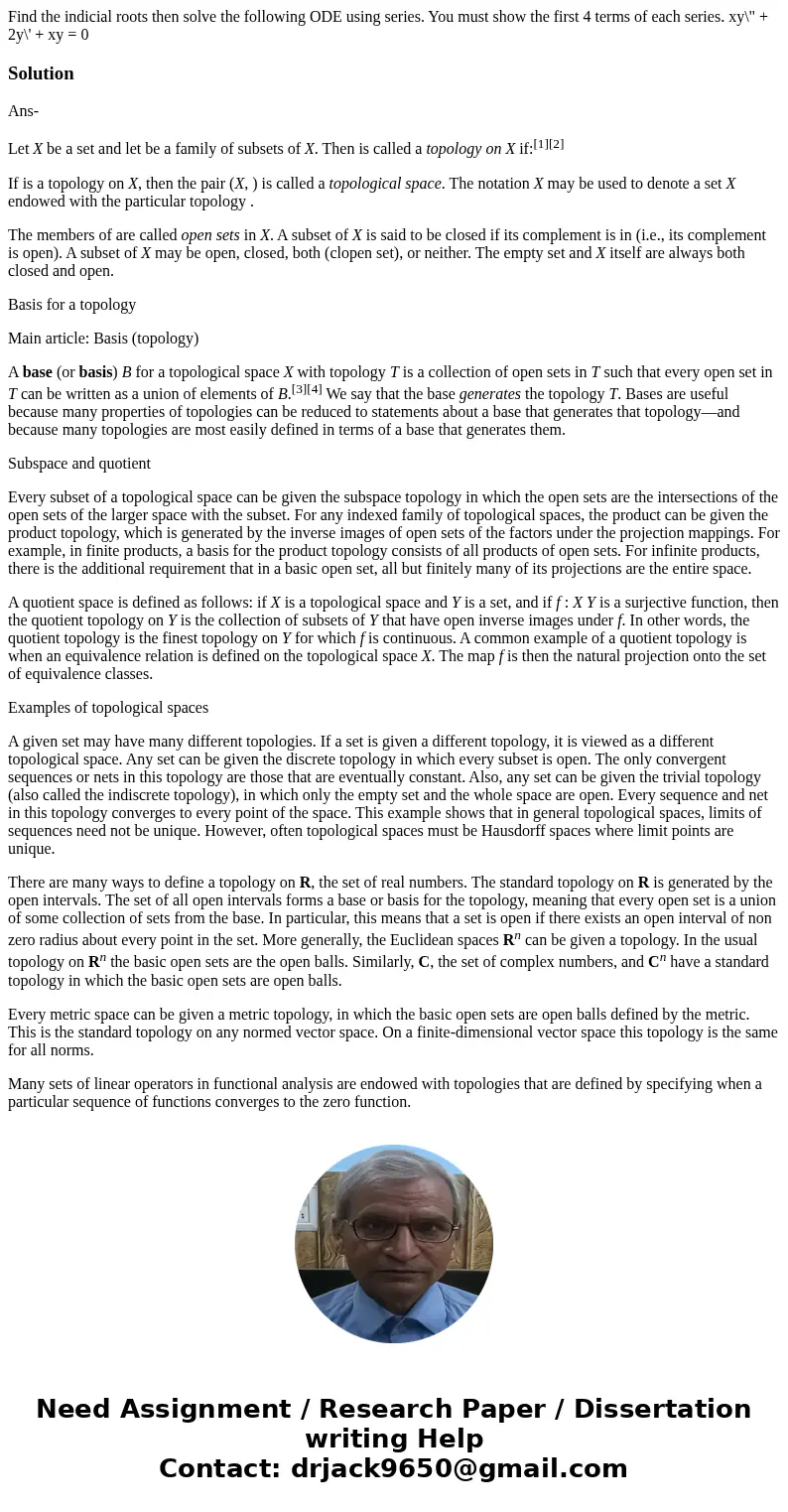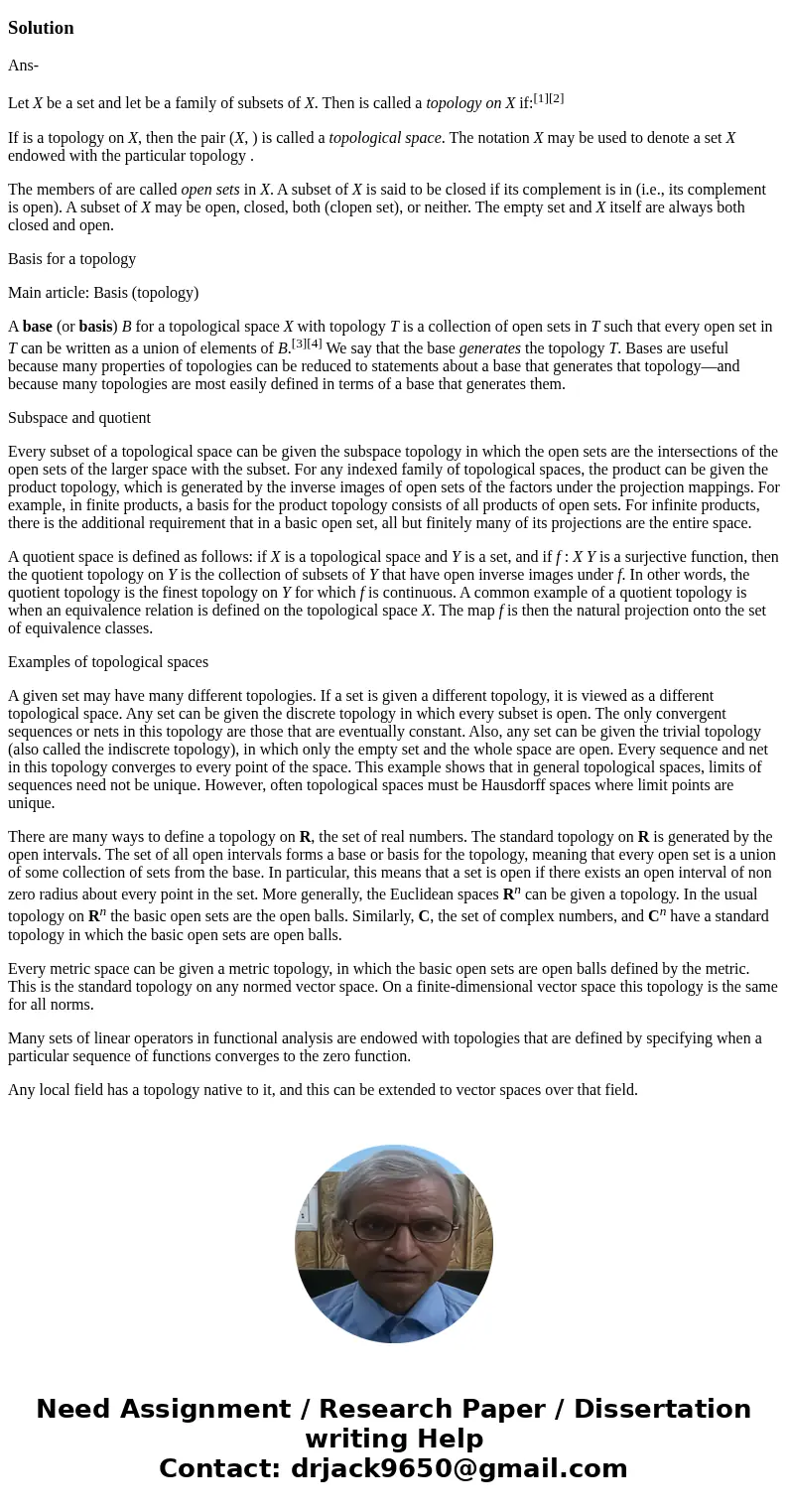Find the indicial roots then solve the following ODE using s
Solution
Ans-
Let X be a set and let be a family of subsets of X. Then is called a topology on X if:[1][2]
If is a topology on X, then the pair (X, ) is called a topological space. The notation X may be used to denote a set X endowed with the particular topology .
The members of are called open sets in X. A subset of X is said to be closed if its complement is in (i.e., its complement is open). A subset of X may be open, closed, both (clopen set), or neither. The empty set and X itself are always both closed and open.
Basis for a topology
Main article: Basis (topology)
A base (or basis) B for a topological space X with topology T is a collection of open sets in T such that every open set in T can be written as a union of elements of B.[3][4] We say that the base generates the topology T. Bases are useful because many properties of topologies can be reduced to statements about a base that generates that topology—and because many topologies are most easily defined in terms of a base that generates them.
Subspace and quotient
Every subset of a topological space can be given the subspace topology in which the open sets are the intersections of the open sets of the larger space with the subset. For any indexed family of topological spaces, the product can be given the product topology, which is generated by the inverse images of open sets of the factors under the projection mappings. For example, in finite products, a basis for the product topology consists of all products of open sets. For infinite products, there is the additional requirement that in a basic open set, all but finitely many of its projections are the entire space.
A quotient space is defined as follows: if X is a topological space and Y is a set, and if f : X Y is a surjective function, then the quotient topology on Y is the collection of subsets of Y that have open inverse images under f. In other words, the quotient topology is the finest topology on Y for which f is continuous. A common example of a quotient topology is when an equivalence relation is defined on the topological space X. The map f is then the natural projection onto the set of equivalence classes.
Examples of topological spaces
A given set may have many different topologies. If a set is given a different topology, it is viewed as a different topological space. Any set can be given the discrete topology in which every subset is open. The only convergent sequences or nets in this topology are those that are eventually constant. Also, any set can be given the trivial topology (also called the indiscrete topology), in which only the empty set and the whole space are open. Every sequence and net in this topology converges to every point of the space. This example shows that in general topological spaces, limits of sequences need not be unique. However, often topological spaces must be Hausdorff spaces where limit points are unique.
There are many ways to define a topology on R, the set of real numbers. The standard topology on R is generated by the open intervals. The set of all open intervals forms a base or basis for the topology, meaning that every open set is a union of some collection of sets from the base. In particular, this means that a set is open if there exists an open interval of non zero radius about every point in the set. More generally, the Euclidean spaces Rn can be given a topology. In the usual topology on Rn the basic open sets are the open balls. Similarly, C, the set of complex numbers, and Cn have a standard topology in which the basic open sets are open balls.
Every metric space can be given a metric topology, in which the basic open sets are open balls defined by the metric. This is the standard topology on any normed vector space. On a finite-dimensional vector space this topology is the same for all norms.
Many sets of linear operators in functional analysis are endowed with topologies that are defined by specifying when a particular sequence of functions converges to the zero function.
Any local field has a topology native to it, and this can be extended to vector spaces over that field.


 Homework Sourse
Homework Sourse